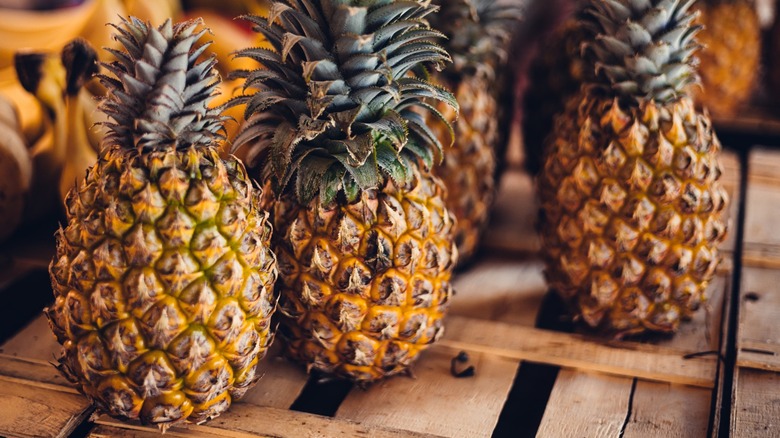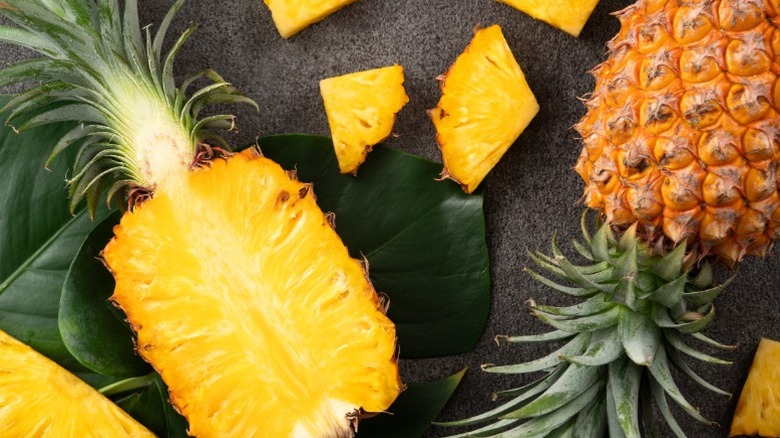Here's When The Peak Season For Pineapple Is
Although fresh pineapple is available throughout the year, the peak season for a perfectly ripe, slightly tangy, and deliciously sweet golden fruit is generally from March through July. A few factors impact this ripeness window: a pineapple's tropical destination of origin, its growing season, and its variety. However, there are plenty of options to choose from during this timeframe.
For example, try a Smooth Cayenne, which is known for its iconic green leaves, tall stature, and yellow flesh. This pineapple hails from Hawaii and is easy to find at the grocery store during peak season. Or, keep an eye out for a Red Spanish pineapple. This shorter, stockier pineapple has green-brown leaves, red-tinged skin, and a firm, straw-yellow fruit and is frequently grown in Florida and Puerto Rico. Another popular variety during peak season is the Queen, which is known for its sweet aroma, thin core, and juicy gold fruit. And you can't go wrong with a Del Monte Gold® Extra Sweet pineapple — a taller, sugary-sweet pineapple with a deep-yellow flesh.
How to select a ripe pineapple
To check for ripeness, first give the pineapple a good look over. Notice if the leaves are shiny green and slightly waxy, or if the leaves are brown and crusty. Try pulling a green leaf off the crown — if it's easily removed, the pineapple is definitely ripe. Another way to test a pineapple's ripeness is to pick it up. Yes, you might feel silly, and someone may look at you with a raised eyebrow (speaking from personal experience), but the heavier a pineapple is, the more likely it's juicy, tender, and ripe for eating. Lastly, give the pineapple a gentle squeeze. If there's some give, but it's mostly firm, you've picked a winner. If it feels mushy or you're able to leave a finger indentation on the side, the pineapple is likely overripe.
If you accidentally select an underripe pineapple, some people say that turning it upside down for two or three days helps to redistribute the sugar and juices at the fruit's base. But, according to William Goldfield, director of corporate communications at Dole Food Company, this is more of a pineapple myth than a hard fact. That's because pineapple is a non-climacteric fruit, which means it only ripens when attached to the parent plant. Once harvested, a pineapple is done ripening. Goldfield recommends limiting pineapple storage time and eating the fruit within three days of buying. If you really can't stomach an underripe pineapple, try grilling it for a burger or baking it into a cake. This warming process will help the pineapple to sweeten up.

